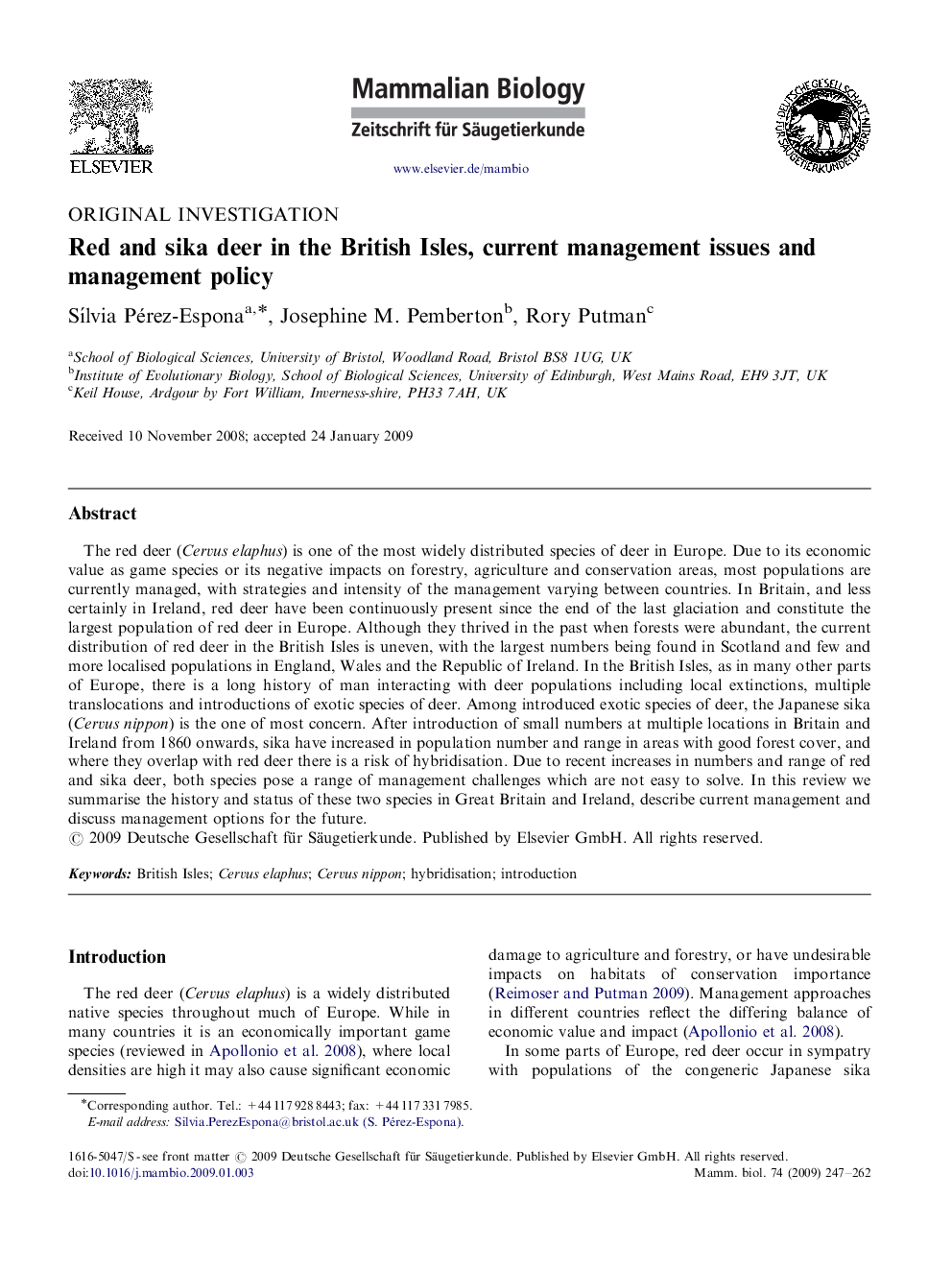| کد مقاله | کد نشریه | سال انتشار | مقاله انگلیسی | نسخه تمام متن |
|---|---|---|---|---|
| 2194175 | 1098422 | 2009 | 16 صفحه PDF | دانلود رایگان |

The red deer (Cervus elaphus) is one of the most widely distributed species of deer in Europe. Due to its economic value as game species or its negative impacts on forestry, agriculture and conservation areas, most populations are currently managed, with strategies and intensity of the management varying between countries. In Britain, and less certainly in Ireland, red deer have been continuously present since the end of the last glaciation and constitute the largest population of red deer in Europe. Although they thrived in the past when forests were abundant, the current distribution of red deer in the British Isles is uneven, with the largest numbers being found in Scotland and few and more localised populations in England, Wales and the Republic of Ireland. In the British Isles, as in many other parts of Europe, there is a long history of man interacting with deer populations including local extinctions, multiple translocations and introductions of exotic species of deer. Among introduced exotic species of deer, the Japanese sika (Cervus nippon) is the one of most concern. After introduction of small numbers at multiple locations in Britain and Ireland from 1860 onwards, sika have increased in population number and range in areas with good forest cover, and where they overlap with red deer there is a risk of hybridisation. Due to recent increases in numbers and range of red and sika deer, both species pose a range of management challenges which are not easy to solve. In this review we summarise the history and status of these two species in Great Britain and Ireland, describe current management and discuss management options for the future.
Journal: Mammalian Biology - Zeitschrift für Säugetierkunde - Volume 74, Issue 4, July 2009, Pages 247–262